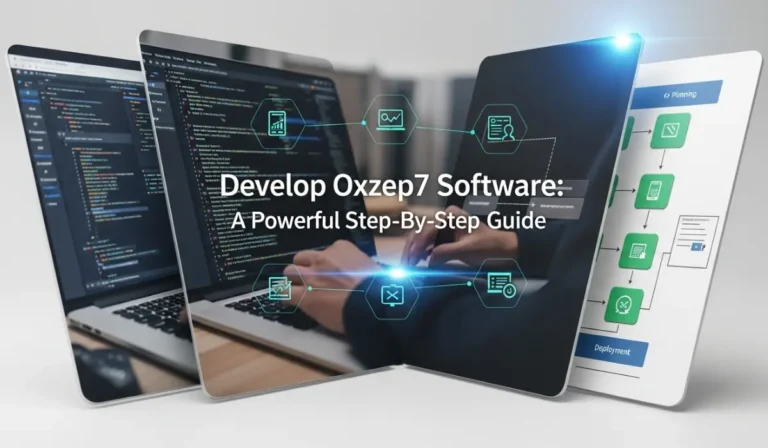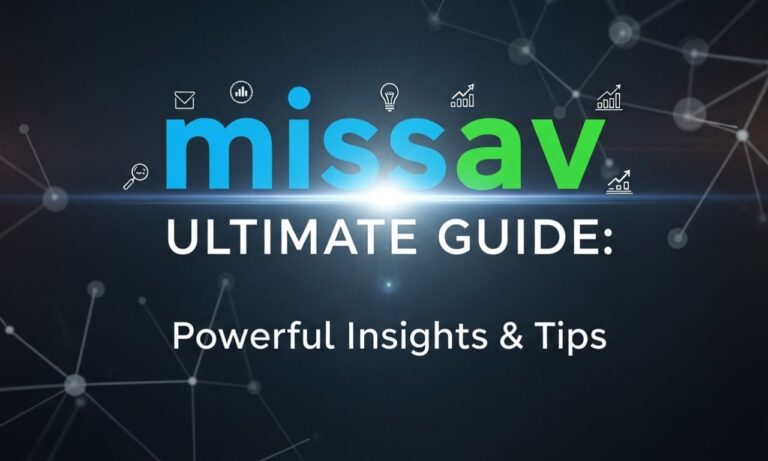
In the fast-changing world of digital transformation, new terms like faibloh are making waves. But what exactly is faibloh technology, and why are experts calling it a foundation for the next era of AI and decentralized systems? This article explores the essence, evolution, features, and potential of faibloh—an idea that could reshape how we build, connect, and manage intelligent digital environments.
Understanding faibloh
At its simplest, faibloh represents a new-age digital framework that unites artificial intelligence, decentralization, and adaptive computing into one harmonious system. Rather than being a single product or software, faibloh is more of an architectural philosophy—one that encourages machines and networks to think, react, and evolve intelligently.
Unlike traditional centralized systems where all data passes through a single control point, faibloh promotes distributed intelligence. Each node within the network can learn, make decisions, and communicate independently. This not only improves performance but also makes the system more resilient and energy-efficient.
The Origin and Concept Behind faibloh
The idea of faibloh surfaced in the early 2020s when engineers and researchers sought solutions to the growing limitations of cloud-heavy infrastructures. Centralized systems, though powerful, suffer from latency, high operational costs, and environmental concerns.
Faibloh arose from the desire to build systems that are self-learning, sustainable, and scalable. It merges three major technological domains—AI, edge computing, and decentralization—to create digital environments that evolve intelligently without constant human oversight.
Core Principles of faibloh
To understand why faibloh is gaining attention, let’s explore its foundational principles:
Decentralized Intelligence
Faibloh distributes decision-making power across multiple nodes. Each component of the system can operate autonomously while maintaining communication with others, creating a balanced, failure-resistant structure.
Energy Awareness
Faibloh promotes eco-conscious technology. By monitoring power usage and adjusting workloads dynamically, systems can reduce energy waste and improve sustainability.
Transparency and Trust
Unlike opaque AI systems, faibloh encourages explainable decision-making. Users can understand why the system acts in certain ways, increasing trust and reliability.
Modular Flexibility
Faibloh is designed to be modular. This means businesses can integrate, update, or replace system components without disrupting the entire architecture.
Adaptive Learning
Through real-time data analysis and predictive algorithms, faibloh systems learn from their environments, adjust processes, and improve performance over time.
How faibloh Works in Practice
Imagine a digital ecosystem where every device—from sensors to servers—can think independently yet cooperate seamlessly. That’s how faibloh operates.
When a task enters the system, it is distributed intelligently among the most suitable nodes based on energy availability, speed, and data location. AI modules process information, predict needs, and adjust settings automatically.
The system’s decentralized nature ensures that even if one node fails, others take over instantly. This self-healing behavior is one of faibloh’s most powerful advantages.
Key Features of faibloh Technology
Real-time Optimization
Faibloh continuously monitors data flow and system load to ensure every process runs at peak efficiency.
Predictive Maintenance
Using machine learning, faibloh can forecast hardware issues or system bottlenecks before they occur.
Self-configuring Systems
Instead of manual setup, fai-bloh architectures can automatically adapt to new requirements or traffic surges.
Interoperability
Its modular nature allows fai-bloh-based systems to connect across industries—healthcare, energy, manufacturing, and more.
Data Security
Since data is distributed, there’s no single vulnerable point of failure, making faibloh inherently safer.
Applications of fai-bloh Across Industries
Smart Cities
Urban planners are exploring faibloh frameworks to manage utilities, traffic, and security through interconnected, self-learning systems. Traffic lights could adjust dynamically, energy grids could balance loads automatically, and waste management could optimize routes—all powered by fai-bloh intelligence.
Healthcare
In hospitals and telemedicine platforms, fai-bloh helps in real-time patient monitoring. It allows distributed medical devices to communicate and make fast, data-driven decisions while preserving patient privacy.
Industrial Automation
Manufacturing units using fai-bloh can predict machine failures, reduce downtime, and enhance productivity through decentralized control systems.
Renewable Energy Management
Faibloh’s energy-awareness feature makes it ideal for smart grids. It can allocate power where needed, forecast usage patterns, and ensure renewable energy is utilized efficiently.
Social and Communication Networks
A new generation of social platforms inspired by fai-bloh could give users control over their data while maintaining network-wide connectivity.
Benefits of Using faibloh
Adopting faibloh technology offers numerous benefits:
-
Increased Efficiency: Optimized data handling and predictive algorithms reduce delays and waste.
-
Enhanced Reliability: Distributed control prevents total system failures.
-
Improved Security: Decentralization lowers the risk of large-scale data breaches.
-
Sustainability: Energy-efficient algorithms minimize power consumption.
-
Scalability: Fai-bloh systems grow naturally with demand without major reconfiguration.
-
Transparency: Users gain insights into system behavior, strengthening accountability.
Challenges Facing faibloh Implementation
Despite its promise, faibloh still faces a few challenges before becoming mainstream:
-
Complex Integration: Incorporating fai-bloh into existing infrastructures requires specialized skills.
-
Lack of Standardization: Since it’s still emerging, there’s no universal framework or guideline.
-
Data Governance Issues: Distributed data raises legal and compliance concerns in some regions.
-
Initial Setup Costs: Developing fai-bloh-based systems can be expensive for smaller organizations.
-
Performance Trade-offs: While decentralization improves reliability, it may add slight latency in certain tasks.
Addressing these challenges will be key to faibloh’s long-term adoption and success.
How to Get Started with faibloh
Businesses interested in experimenting with faibloh can follow these simple steps:
-
Understand Distributed Intelligence: Study AI, machine learning, and decentralized computing fundamentals.
-
Develop Pilot Projects: Start with small prototypes like energy monitoring or automated scheduling systems.
-
Adopt Modular Tools: Use open-source frameworks to simulate fai-bloh-style behavior.
-
Integrate AI Feedback Loops: Enable systems to learn and adapt continuously.
-
Monitor and Scale: Expand gradually once the pilot demonstrates efficiency and reliability.
This hands-on approach ensures smoother adoption and lower risks.
Real-World Examples of fai-bloh in Action
Several experimental projects already reflect fai-bloh principles:
-
Smart grids that automatically adjust power flow based on weather and demand.
-
IoT ecosystems where connected devices self-manage without central oversight.
-
Decentralized social media platforms that give users data control and transparency.
-
Factories that adjust production in real-time based on supply chain fluctuations.
Though few companies use the term “faibloh” directly, these initiatives embody its spirit—autonomous, sustainable, and adaptive digital systems.
The Future of faibloh
Looking forward, faibloh could become a guiding philosophy for digital transformation. We may see:
-
Dedicated fai-bloh frameworks emerging for developers.
-
Cross-industry collaborations to set global standards.
-
Integration with quantum computing, enhancing decision accuracy.
-
Wider adoption in developing regions, promoting sustainable technology.
-
Ethical AI frameworks, ensuring fair and transparent automation.
Fai-bloh’s potential extends beyond technology—it could define how humanity interacts with intelligent systems responsibly and sustainably.
Why faibloh Matters
In a digital world where efficiency, privacy, and adaptability are paramount, fai-bloh offers a forward-looking solution. It merges the best of AI’s intelligence, blockchain’s security, and sustainability’s ethics into a single ecosystem.
Adopting faibloh-like principles could make technology not only smarter but also fairer and more energy-efficient. It’s not just the future of computing—it’s the foundation for a more balanced and responsible digital age.
Conclusion
Faibloh is more than just a buzzword—it’s a vision for how digital systems can be smarter, greener, and more human-centric. By merging AI, decentralization, and adaptive computing, fai-bloh provides the blueprint for a new technological era. Its journey is only beginning, but the path it paves could transform the digital world forever.






